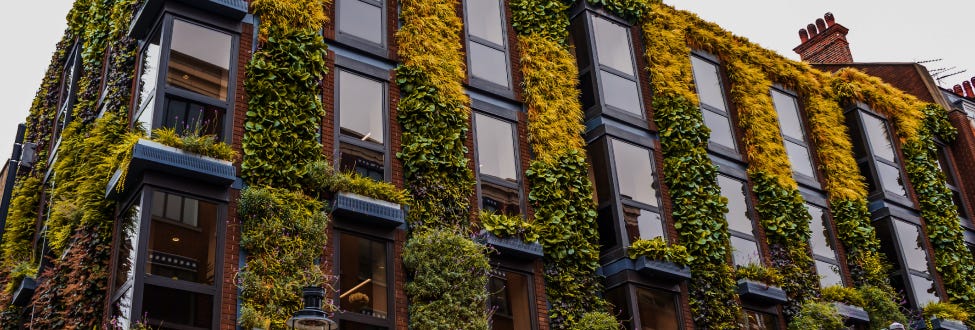How Does Architecture Promote The Use Of Sustainable Building Practices In Developing Countries?

As we all know, sustainable building practices are becoming increasingly important. It's not just about reducing our carbon footprints anymore, it's also about better resource management, improving indoor air quality, providing healthier living and working conditions, and enhancing the overall quality of life. Why are sustainable building practices so important? Let's delve into the details.
Lower Environmental Impact
Sustainable buildings use fewer natural resources and emit less pollution. They reduce overall greenhouse gas emissions and waste production, allowing us to conserve energy and preserve natural resources for future generations. By incorporating energy-efficient designs, technologies, and equipment, sustainable building practices can reduce energy and water consumption, minimize waste, and decrease negative environmental impacts.
Improved Indoor Air Quality
Sustainable buildings can improve indoor air quality by reducing pollution, increasing ventilation, and using non-toxic materials. By reducing the amount of pollutants and toxins such as volatile organic compounds (VOCs), lead, and asbestos, tenants can breathe cleaner air. Proper ventilation also plays a crucial role in indoor air quality, allowing fresh air to circulate while filtering out indoor air pollutants.
Cost Savings
Sustainable buildings can save money in the long run by reducing operating costs. By using energy-efficient designs, technologies, and equipment, sustainable building practices can reduce energy and water consumption, waste production, and maintenance costs. Also, sustainable buildings are more attractive to tenants, resulting in higher occupancy rates and increased property values.
Community Benefits
Sustainable building practices benefit the local communities by reducing the environmental impact, enhancing the quality of life, and improving local economies. By reducing greenhouse gas emissions, waste production, and energy and water consumption, sustainable buildings help preserve natural resources, mitigate climate change, and protect the environment. They also provide healthier living and working conditions, promoting the physical and mental well-being of the occupants. Finally, sustainable buildings often use locally sourced materials and support local businesses, contributing to the local economy.
Challenges and Solutions
Sustainable building practices face several challenges, such as higher upfront costs, lack of awareness and education, and uncertain market demand. However, these challenges can be overcome by adopting sustainable design principles, utilizing the latest technologies and equipment, and educating and engaging stakeholders.
Sustainable design principles include passive solar design, green roofs, rainwater harvesting, and natural ventilation. These principles can reduce energy consumption, reduce water usage, and improve indoor air quality.
The latest technologies and equipment include energy-efficient HVAC systems, LED lighting, and smart building automation systems. These technologies can reduce energy consumption, improve indoor air quality, and enhance occupant comfort.
Education and engagement are essential to promote sustainable building practices and raise awareness and demand. Stakeholders, including architects, engineers, contractors, and tenants, need to be trained and informed about sustainable building practices, their benefits, and their impact on the environment and society.
Frequently Asked Questions
What are sustainable building practices?
Sustainable building practices are design and construction methods that minimize the environmental impact and promote resource efficiency, while providing healthy living and working conditions.
What are the benefits of sustainable building practices?
The benefits of sustainable building practices include lower environmental impact, improved indoor air quality, cost savings, and community benefits.
What are the challenges of sustainable building practices?
The challenges of sustainable building practices include higher upfront costs, lack of awareness and education, and uncertain market demand.
How can we overcome the challenges of sustainable building practices?
We can overcome the challenges of sustainable building practices by adopting sustainable design principles, utilizing the latest technologies and equipment, and educating and engaging stakeholders.
What are sustainable design principles?
Sustainable design principles include passive solar design, green roofs, rainwater harvesting, and natural ventilation. These principles can reduce energy consumption, reduce water usage, and improve indoor air quality.
What are the latest technologies and equipment for sustainable buildings?
The latest technologies and equipment for sustainable buildings include energy-efficient HVAC systems, LED lighting, and smart building automation systems. These technologies can reduce energy consumption, improve indoor air quality, and enhance occupant comfort.
What is the role of education and engagement in sustainable building practices?
Education and engagement are essential to promote sustainable building practices and raise awareness and demand. Stakeholders, including architects, engineers, contractors, and tenants, need to be trained and informed about sustainable building practices, their benefits, and their impact on the environment and society.
In conclusion, sustainable building practices are crucial for reducing the environmental impact, improving indoor air quality, saving costs, and benefiting local communities. Although they face challenges such as higher upfront costs and lack of awareness, these challenges can be overcome by adopting sustainable design principles, utilizing the latest technologies and equipment, and educating and engaging stakeholders. As we move towards a more sustainable future, sustainable building practices will continue to play a vital role in enhancing the overall quality of life and preserving our planet for future generations.




Post a Comment for "How Does Architecture Promote The Use Of Sustainable Building Practices In Developing Countries?"